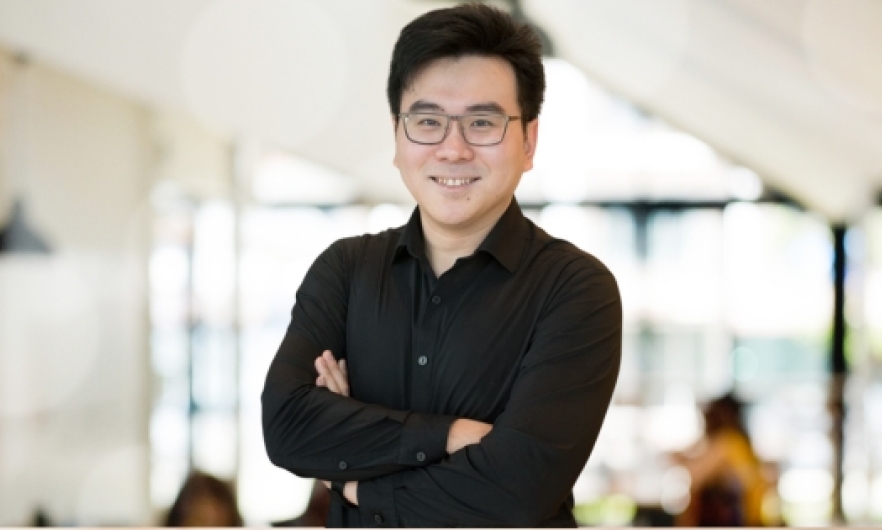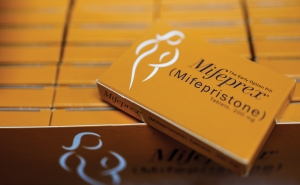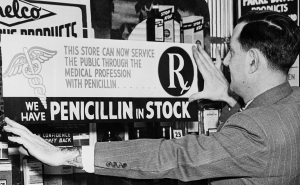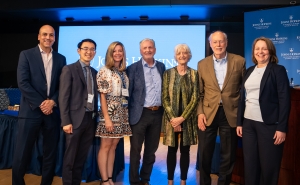Alumni Spotlight: Junrui Di, PhD ’19
Junrui Di, PhD ’19, works at Pfizer as a Digital Medicine Statistician.

Junrui Di, PhD ’19, is a Digital Medicine Statistician at Pfizer, where he is part of Pfizer Research & Development's AI/ML Quantitative and Digital Sciences group, specializing as a Digital Medicine. His thesis, under the direction of Vadim Zipunnikov, was entitled, "Feature Engineering and Statistical Methods for Wearable Device Data."
Junrui recently celebrated the acceptance of his first-author paper by Nature Pediatric Research, marking the culmination of his 8-year journey in academic publishing. Since 2020, Junrui has had the privilege of mentoring seven students from diverse academic and social backgrounds during their summer internships or co-op experiences. He writes, "While not holding a faculty position, I find immense satisfaction in guiding the next generation of statisticians. It's gratifying to see that nearly all of them have chosen careers in the pharmaceutical industry as statisticians or pursued further education in statistics or data science."
It's indeed cool when the quantitative knowledge and skills we possess can directly benefit people's everyday lives, making a difference that matters.
Describe your current position and responsibilities in a way that will inform current and prospective students about career opportunities in biostatistics.
Digital health technologies, such as wearable devices like Fitbit or Apple Watch, have garnered increasing attention in drug development. Regulatory guidance has emerged on their deployment in clinical trials, with multiple registrational trials incorporating digital measures as primary or key secondary endpoints. I was fortunate to work with Vadim, Ciprian, and others from the WIT group on making sense of data from wearable devices when I was at Hopkins. In my current role, I collaborate closely with a multidisciplinary team of clinicians, technicians, data scientists, and engineers to integrate digital health technologies into clinical development.
As a statistician, my focus lies in designing studies to capture device data across various pathological cohorts, facilitating the training and validation of new algorithms for developing novel digital endpoints. Our work involves conducting research to craft fit-for-purpose solutions utilizing state-of-the-art data processing pipelines and algorithms. Subsequently, we collaborate with drug trial teams to implement and validate the devices and endpoints we've developed. I serve as a subject matter expert, aiding clinical teams in selecting suitable devices and endpoints, and identifying optimal analytical solutions.
Within the pharmaceutical industry, statisticians hold a pivotal role and command respect due to the inherently quantitative nature of drug development and approval decisions. As gatekeepers, statisticians ensure the application of sound scientific reasoning throughout the drug development process, influencing decision-making at every stage.
What has been your most satisfying job experience using your biostatistics background?
Together with my colleagues, we pioneered the development of the first of its kind wrist-worn accelerometer-based algorithm for detecting nocturnal scratching, a crucial clinical solution for dermatological conditions like atopic dermatitis. This innovation has not only resulted in multiple publications and patents but has also had a profound impact on the industry. Our algorithm laid the foundation for the entire field, inspiring other companies to follow our steps. The formation of cross-industry consortia, focused on adopting nocturnal scratching as a clinical endpoint reflects the significance of our work. Being at the forefront of this development has been incredibly exciting and fulfilling.
In my role as a statistician, I designed numerous studies to gather training and validation data for the scratch detection algorithm, demonstrating its device-agnostic nature. I developed statistical methods to effectively analyze densely measured endpoints and served as the statistical lead during interactions with regulatory bodies such as the FDA and EMA, seeking their qualification opinions on our product.
The experience of being a pioneer in this field has been invaluable, both in terms of professional growth and the tangible impact our work has had on improving clinical outcomes for individuals with dermatological conditions.
How did you get interested in the field of biostatistics?
Similar to most other students in our department, I was majored in statistics and mathematics. I always want to make real-life impact with what I learned. How cool is it when the real-life impact you make is on people’s REAL LIFE?
Making a real-life impact is not only exciting but also a privilege. It reminds us of the importance of our work and motivates us to continue striving for excellence in our field. It's indeed cool when the quantitative knowledge and skills we possess can directly benefit people's everyday lives, making a difference that matters.
How did your degree in Biostatistics prepare you for your career? What aspects of the Hopkins program did you find most useful?
The department has provided a well-designed curriculum that equips us, as statisticians, with a solid foundation in statistical inference, modeling methods, and computational techniques. One of the most valuable aspects of our training is the opportunity to collaborate with scientists from diverse fields such as epidemiology and mental health. Through these collaborations, we not only gain insights into their scientific inquiries but also identify opportunities for statistical innovation to enhance their research.
Beyond acquiring hard skills, what I appreciate most from Vadim and other mentors and colleagues is the mindset instilled in us to not only be successful statisticians but also successful scientists. Historically, statisticians have been viewed as supporting staff (and “those who get us the p values”). However, in today's era of extensive data availability, it's imperative for statisticians to delve into the scientific questions themselves.
Our generation of statisticians should aspire to address real scientific inquiries, even if the statistical methods required may seem straightforward. To achieve this, we must cultivate sufficient subject matter expertise in the scientific domain, learn to lead discussions with other scientists, and master the art of conveying complex statistical concepts in accessible ways to non-statisticians. I actively encourage these principles among my trainees, emphasizing the importance of bridging the gap between statistical methodology and scientific inquiry for impactful research outcomes.
What are your favorite memories of your time at Johns Hopkins Biostatistics?
I enjoyed my lunchtime chats with friends and classmates, savoring the chance to unwind and connect outside of busy work. Dining with seminar speakers provided invaluable opportunities to learn more about their research and career journeys. I particularly enjoy the mixers at ENAR and JSM, where I mingle with both new acquaintances and old friends, keeping connections that endure over time.
What was your favorite thing about living in Baltimore?
The National Aquarium has always been and remains my favorite spot. I still take my son there occasionally. The Sandlot was another favorite of mine before its closure.





